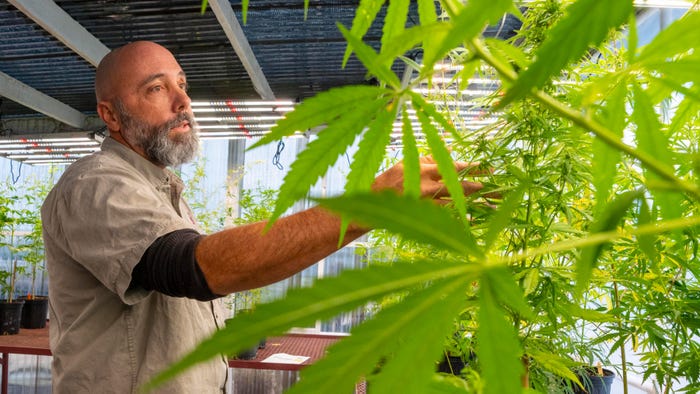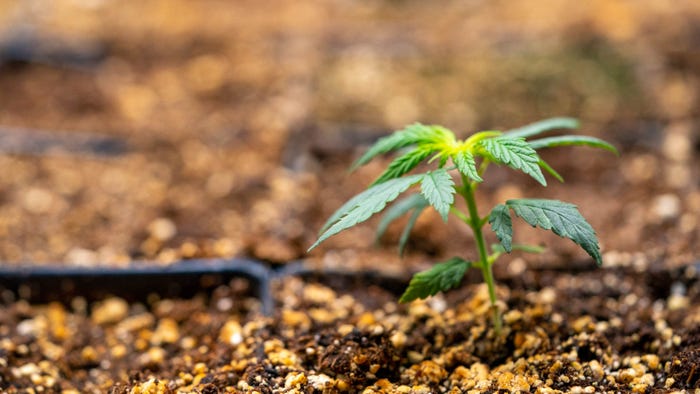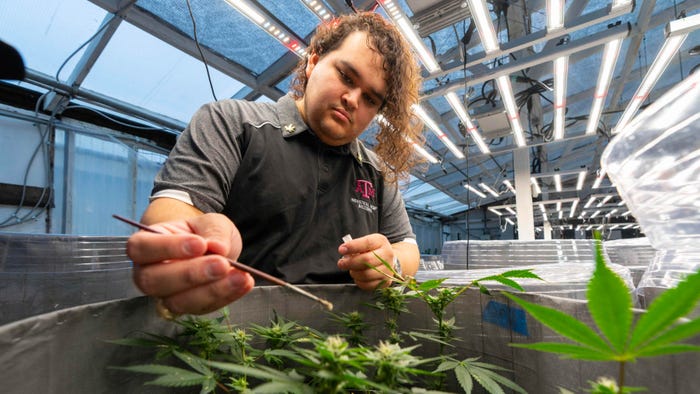
The Texas A&M AgriLife Research Industrial Hemp Breeding Team, led by Russ Jessup, hemp breeder and professor in the Texas A&M Department of Soil and Crop Sciences, has the potential to influence multiple fields, from insecticides to cosmetics. Michael Miller (If viewing on a mobile, captions are located beneath the ads)
Russ Jessup and his team of student researchers see themselves as explorers, charting the future of a new crop – they are the Texas A&M AgriLife Research Industrial Hemp Breeding Team.
Facing the unknown and exploring, building and strengthening the new crop from the ground up is a once-in-a-lifetime opportunity the students and Jessup, AgriLife Research hemp breeder in the Texas A&M College of Agriculture and Life Sciences Department of Soil and Crop Sciences, said they couldn’t pass up.

The Texas A&M AgriLife Research Industrial Hemp Breeding Team, led by Russ Jessup, Ph.D., hemp breeder and professor in the Texas A&M Department of Soil and Crop Sciences, has the potential to influence multiple fields, from insecticides to cosmetics. (Texas A&M AgriLife photo by Michael Miller)
“We are casting a wide net to position Texas A&M as the leader in hemp research,” Jessup said. “I don’t know of any other program working on the breadth of research on industrial hemp as we have in this program.”
Jessup’s team of four graduate and four undergraduate students aims to develop hemp cultivars made for the Texas heat and tolerant of drought that will consistently meet the state’s legal requirements.
What is hemp, and why does it matter?
Hemp refers to the Cannabis plant with a tetrahydrocannabinol, THC, concentration of not more than 0.3% when weighed on a dry-weight basis. THC is the active constituent of marijuana, which can contain 25% THC or more. In Texas, any hemp crops with more than 0.3% THC must be destroyed.
Cannabidiol, or CBD, is one of the most popular products associated with hemp production. However, the Texas A&M team believes their research will provide a new crop alternative for producers and a potentially green alternative to the non-consumable bioproducts of hemp, such as plastics and pesticides.
Although the crop offers many opportunities, Jessup said a big reason noted by researchers and producers alike that the crop has not hit its full potential in the market is due to its challenge in adapting to the heat. This speaks to why there is not much hemp grown today in Texas.
Adding value to hemp
Jessup said his research mission is to identify new ways to add value to existing crops. That effort started with perennial grasses and then extended to his work exploring potential bioenergy-uses for crops. Now he has his eyes focused on hemp.
“These plants and crops are all biorefineries – you just have to know how to look at them,” he said.
As soon as the 2019 federal law was passed making it legal to grow hemp in Texas, experts from across Texas A&M AgriLife began working with the crop.
Jessup was quickly joined by Texas A&M AgriLife Extension Service agronomist and state hemp specialist Calvin Trostle, Lubbock, and AgriLife Research breeder Jorge de Silva, both in the Department of Soil and Crop Sciences. Together, they tried to see what existing hemp varieties were available to Texas producers and study how those varieties performed across the state.
Jessup said his long-term vision with hemp is to see how many products can be derived from it to create greater marketability for the crop and, thus, more profit for producers. He started from scratch and has built his hemp research program from the ground up.

- Hemp growing lab at the Perennial Grass Breeding and Genetics building in College Station. (Michael Miller/Texas A&M AgriLife Marketing and Communications)
“We want to develop all facets of this crop to maximize its market potential by exploring improvements in everything from seed adaptability to bioproduct creation,” he said.
Jessup said that will begin with addressing heat adaptability and then include efforts to produce bigger seeds, longer fibers and additional bioproducts such as insecticides derived from the terpenes. Another area of research is with nanocellulose that can be manipulated and used as an emulsifier in anything from cosmetics to food products or as a matrix for diverse, renewable biocomposites.
Texas A&M’s hemp breeding program
The first funded research project on industrial hemp in Texas began in 2020 and included outdoor field trials of CBD hemp. Jessup and four AgriLife Extension agronomists from around the state joined this project.
The agronomists primarily worked with hemp varieties from Colorado, Oregon and Europe. They determined very early those varieties may work well in the South Plains and Panhandle, but were not suitable to hotter temperatures in the southern regions of Texas and the U.S.
In 2020, with base funding provided by Rare Earth Genomics and owner Mason Berry, the breeding program took off and has continued to grow.
“We are enamored with the process and the program here at Texas A&M. They are the only ones who have brought genetics to the table,” Berry said. “Their research is going to help the industry, farmers and the planet. We hope for a worldwide chain of products as these Texas A&M researchers stabilize the genetic stocks to create repeatable products, ranging from medicine and clothing to food products for animals and humans, that will be sustainable both environmentally and economically.”
Hemp advancements
Each of Jessup’s student research team members is exploring different potentials with hemp. The following is a look at the students and their research advancements:
Clayton Moore, an undergraduate plant and environmental soil science student, is establishing a public Hemp Conversion Program germplasm collection. He is looking at 75 populations to find new and compliant varieties and expects to release some this year adapted for the southern Coastal regions, including southern Texas.
Zeke Soto, a doctoral plant breeding student, is creating seed for uniform inbred lines with self-pollinating plants to create pure breeding lines. He expects pre-commercialization lines to be available this year.
Chris Garcia, a doctoral molecular and environmental plant science student, has doubled the chromosomes in hemp plants to create polyploids and is breeding for more genetic stability. He hopes to see increases in seed oil yield, fiber length and fiber yield.
Josh VanDyke, a doctoral molecular and environmental plant science student, is analyzing fiber-use in cannabis. Bast fiber, the outside, is long and stringy and used for clothes or rope. Hurd fiber, the inside, can be used for paper and nanofiber that can replace some plastics and emulsifiers and used in foods and beverages.
Ian McGrath, an undergraduate plant and environmental soil sciences student, is developing an organic terpene-based pesticide. He is screening terpene isolates to see which ones kill the insects the best. His goal is to provide a food-grade, organic pesticide.
Meredith Clay, an undergraduate horticultural sciences student with plant and environmental soil science crops emphasis and a plant breeding minor, is conducting breeding traits focused on harvest depending on end use.
Hemp's bright future
From the barebones beginning of the program to now boasting eight grow rooms, two greenhouse spaces, an insectary, a dedicated hemp lab and a continuing need for expansion of those spaces, Jessup is proud of and hopeful for the future of the program.
Thus far, he said the hemp breeding program has generated more than $1.2 million in grants. As the program moves forward, they expect to have some exciting updates and opportunities for private companies to consider after this year.

- Soil and Crop Sciences PhD student Ezekiel Soto dusts plants with pollen at the hemp growing lab at the Perennial Grass Breeding and Genetics building in College Station, Texas. (Michael Miller/Texas A&M AgriLife Marketing and Communications)
“We are seeing many firsts being developed here at Texas A&M as we explore hemp’s potential in Texas,” Jessup said. “We will have the first true F1 hybrid seed derived from pure-breeding inbred line parents, the first dual-use fiber and grain hemp, and a whole suite of hemp-derived, value-added bioproducts. These are very exciting times.”
About the Author(s)
You May Also Like




